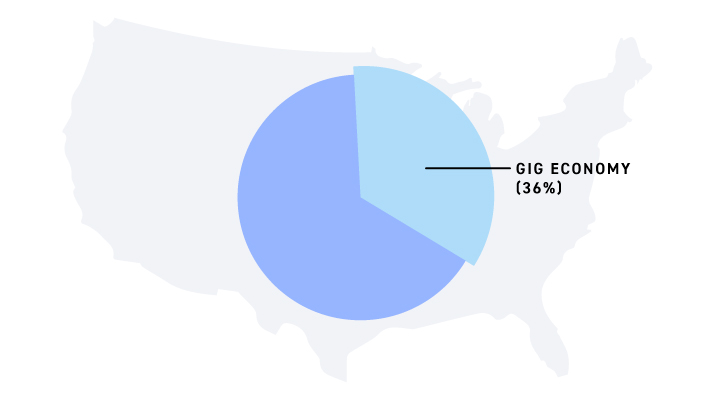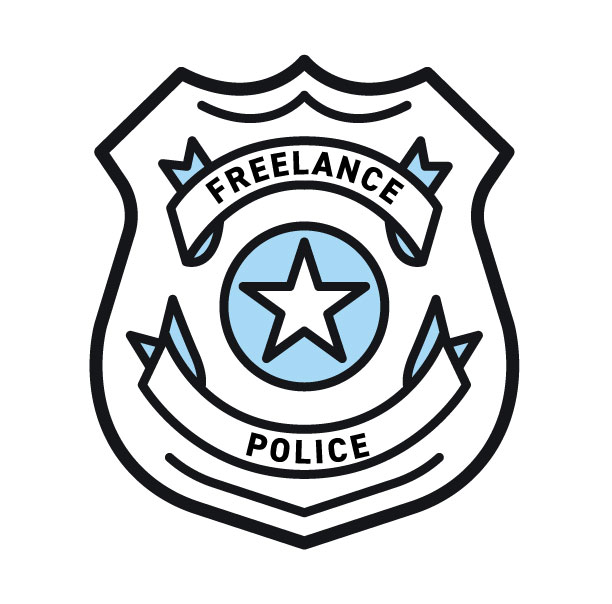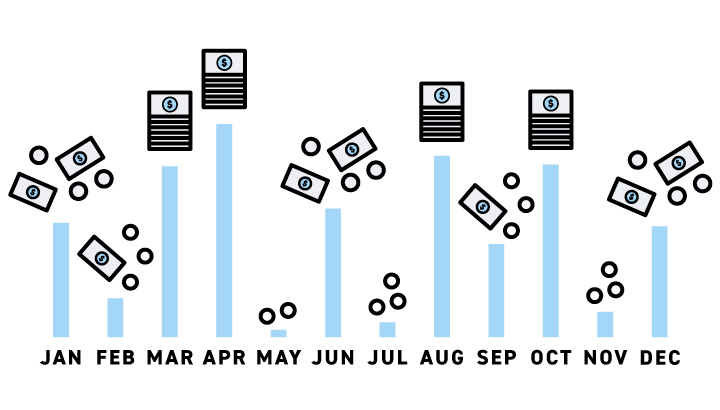Four years ago, TechCrunch published an article called “In the Future, Employees Won’t Exist.” That was their way of predicting that the future state of work will be irrevocably tied to freelance contracting instead of traditional full-time employment.
Artisan Talent has been following the state of freelancing for a decade, and publishing insights on the topic since 2016. We have come a long way since the early days of contracting: The EY Global Contingent Workforce Study says by 2020 nearly one in five global workers will be in some sort of contingent role. LinkedIn says that, by next year, 43% of American workers will be freelancers.
While the future that TechCrunch predicted isn’t quite here yet, let’s look at the current state of freelancing and how it may affect your work prospects in the coming year.
When Did Freelancing Really Kick Off?

Freelancing has always existed in one form or another. The very term comes from 1800s medieval mercenaries, according to Webster.
Whether you call them freelancers, independent contractors, temp or on-demand workers, or something else, this contingency workforce isn’t going away. By 2027, freelancer workers will make up the majority of the American workforce.
In May 2017, the Bureau of Labor Statistics released data on the number of U.S. workers who held “contingent jobs,” which they defined as just about anything that wasn’t full-time. The numbers looked like this:
- 10.6 million independent contractors (6.9% of the total employment pool)
- 2.6 million on-call workers (1.7% of the total labor pool)
- 933,000 workers provided by contract labor firms (0.6% of the market)
Today, Forbes says more than one-third (36%) of U.S. workers are somehow tied to the gig economy. That’s about 57 million Americans who have some kind of 1099-contract side hustle, have transitioned to full-time freelancing, or ended up somewhere in between.
What brought us to this point? Analysts suggest that the 2008 Great Recession propelled many workers into the freelance marketplace when their full-time roles evaporated. While this is true, other trends have propelled workers into more flexible work arrangements.
For example:
- Longer Stretches of Unemployment
The average length of unemployment in the United States has gradually lengthened from 8.5 weeks in 1980, to 12 weeks by the year 2000, to 25.1 weeks today. This phenomenon has forced American laborers to look for more creative ways to earn money. - Loss of U.S. Retirement Plans
Your parents may have had an actual pension plan to help them save for retirement. Those days are over. From 1975 to 2005, the number of private-sector companies with pension benefits fell from 88% to 33%. But it’s not just the private sector: State governments are closing their pension plans, too, leading 20somethingfinance to say, “Most twenty-somethings have never and (unfortunately) probably will never sniff the sweet security provided by a pension plan.” - Better Technology
The internet changed everything, allowing us to work from anywhere that has a signal. This easy communication has allowed contract and remote workers to increase their flexibility and work on their own terms. There are dozens of free and paid online tools for freelancers, from job boards, to apps for billing and time tracking, scheduling, task and project management, data analytics, and a whole lot more.
All of these trends fueled the expansive growth of freelancing, but what is the current state of flexible work arrangements?
What Happened in the Past Year?

Last year, Artisan Talent published The Ultimate Guide to Freelancing in 2018. Since then, the biggest shift seems to be that freelancers are increasing, not decreasing. This lines up with the prediction that the new world of work will be contract and not full-time.
While it may be easy to blame an increase in contract jobs on the Great Recession, that doesn’t explain why the gig economy isn’t slowing down. Business News Daily poses it this way: “If the Great Recession was indeed a major motivator…one would expect the number of alternative arrangements to dwindle over time as the effects of the recession are mitigated.” That simply hasn’t happened.
Employers like freelancing for the savings. Freelancers assume the burden of payroll taxes, benefits, and Medicare and Social Security taxes. This saves employers 20 to 30% on their annual hiring costs. Given that the cost of employee health plans are going up by another 5% this year, it’s not surprising that more employers are considering the financial benefits of skipping traditional employment and hiring a contract workforce.
Employers also benefit from the specialized nature of freelancers. These contract workers are like designated hitters in baseball—they have specialized skills that make them more valuable when they step up to the plate. They’re also arguably more productive; unless they’re under a contract, freelancers are easier to replace, so the assumption is they will hustle more to keep the job.
Hiring contract workers is like using services on the internet. The approach allows growing companies to scale or shrinking companies to cut back, all while being cost-efficient. Additionally, contractors have fewer entitlements than full-time employees. They cannot sue a company for overtime compensation or family medical leave violations.
Here are a few changes and trends impacting freelancers this year:
- New “Freelancing Isn’t Free” Law
In May 2017, New York City passed a new law that provides basic protections for these workers. The law was designed to stop deadbeat clients from hiring contract workers and skipping out on payment, a practice that happens all too frequently. The law requires contracts for any service costing more than $800 and a payment term of 30 days, among other requirements. However, it’s too early to know if this new law signals a trend that other cities and states will follow. - New Tax Overhaul
Last year, a major tax overhaul shook things up for independent contractors; AARP suggests this was a good thing. The overhaul added a complicated but potentially positive qualified business income deduction that might have some benefit for freelancers, as well as a higher standard deduction and a home office deduction. There was also an increase in the write-off dollar amount for new equipment, education and training, car expenses, and more. - Collaborative Workspaces Are Increasing
Coworking spaces are very popular—demand has doubled in the past few years. Freelancers get lonely, and coworking spaces offer a comfortable environment for collaboration, with the usual office amenities like conference rooms, Wi-Fi, printers, and more.
With these changes from the past year, are the benefits and drawbacks of freelancing still the same?
Benefits of Freelancing in 2019
Freelancing is entrepreneurship and it has the same benefit as business ownership: You own it. We know that employee engagement is down, but freelancers have a measure of control over their work that full-time workers lack.
BMO Wealth Management released a study in 2018 that said 60% of the workers polled made the switch to freelancing because they wanted to, 42% of workers responded by saying they just wanted a change, and 15% said they wanted to find their purpose after a previous business venture. These answers illustrate the primary benefit of freelancing: Being successful as a freelancer is winning in an entirely satisfying way.
Some of the other benefits of freelancing, contract work, or other alternative work arrangements include:
- The flexibility to work when and where you want
- The ability to make extra money on the side
- Better work-life balance
- More control over your life
- Being your own boss
- Less stressful work environment
- More meaningful work
- Better pay
- Greater empowerment
These benefits are strong incentives for joining the gig economy. How do we know this? One study said more than 50% of freelance workers with part-time side hustles want to turn their part-time work into full-time. Like any job, however, freelancing does have a darker side.
Drawbacks of Freelancing in 2019

Every job has a downside, and the same is true for freelancing. Here are some freelancing negatives:
- The Benefits Are All You, Buddy
Unless you’re hired through a recruiting agency under a contract role, benefits remain problematic for the average freelance worker. Health insurance is one thing, but what many new freelancers don’t realize is that if you don’t work, you can’t bill for payment. Full-time freelancers do not get sick or vacation pay the way full-time employees do. So while freelancing gives you the freedom to pick and choose the job, it also gives you the freedom to work yourself to death. That may sound melodramatic, but it’s true. - Irregular Income
Last year, PayPal’s Global Freelancer Insights Report came out and noted that irregular income remains the top challenge for freelancers. Working as a salaried employee means the benefit of a steady paycheck. Freelancers will tell you that running your own business has an ebb and flow that comes with any entrepreneurial venture. However, freelancing through a platform like Upwork is a lot different from taking on a contract role through a recruiting firm. The benefit of a staffing agency is that there is a free advocate working behind the scenes to place you in the type of role you’re seeking. If you’re going it alone, you are more likely to experience financial peaks and valleys.
The Future State of Freelancing

What comes next for the state of freelancing? Anything can happen, but we believe that flexible work arrangements will continue to grow. The rise of contract work is indicative of changing work models and fluctuating marketplaces driven primarily by digital innovation. In the next few years, the state of freelancing will offer us:
- An Increasing Variety of Jobs Turning into “Alternative” Work Models
In 1989, freelancers made up just 6% of the U.S. workforce. Today, we’ve almost hit the halfway mark, with no signs of slowing down. It’s clear that freelancing is not only here to stay—it’s becoming the norm. - Easier for Anyone to Freelance
Contractors always have to hustle to find work, but hustling is easier now because online platforms from Upwork to Freelancer specialize in linking jobs to employees. Freelancing is now an on demand service as close as a web portal job board. - Healthcare Reform
Losing health benefits can be terrifying. Without insurance, one emergency could lead to financial insolvency. The passage of Obamacare, or the Affordable Care Act (ACA), made it easier to get direct-purchase health insurance for those not covered by employer plans. Despite the controversy surrounding the ACA, it did enable freelancer contractors to go to their state healthcare marketplace and apply for insurance coverage. They didn’t have to depend on an employer to provide insurance. Today, the ACA is in a shaky position. It’s likely that health insurance coverage and Medicaid expansion under the law will be affected this year. Most believe the law will stay in place, but the uncertainty over the legal challenges to the legislation may cause rates to increase this year.
Love it or hate it, today’s flexible work arrangements have actually put workers in the driver’s seat. Freelancing can be a viable alternative to the traditional job. It’s an important way to shore up a full-time job, both for extra income, but also for the security that comes from having a side hustle.
We’re in a new era of work, and Artisan Talent is at the forefront of creative talent, standing by to take on tomorrow’s challenges. Talk to our team about taking the plunge into contract work. We can help you pave the way to the satisfying career you’ve been imagining with more control over your schedule, your income, and your life.

/Dream_Job1.jpg?width=436&height=255&name=Dream_Job1.jpg)
/LinkedIn%20Connections.jpg?width=436&height=255&name=LinkedIn%20Connections.jpg)
